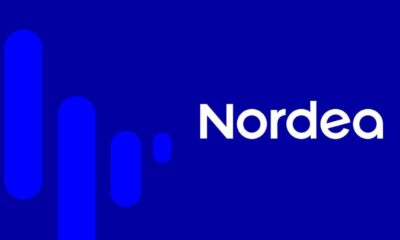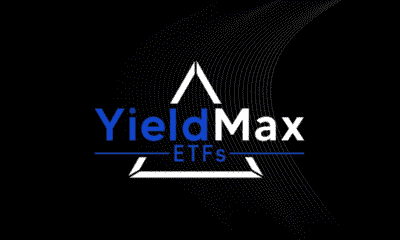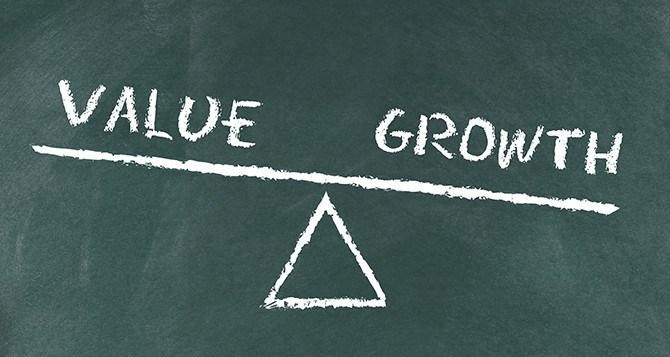När du vill lägga till en aktiefokuserad börshandlad fond (ETF) till en portfölj måste du vanligtvis välja mellan en av två breda kategorier: värde eller tillväxt. Värde-ETF:er ser ut att investera främst i aktierna i företag som anses vara undervärderade, med hjälp av mått som pris-till-vinst-förhållandet (P/E) jämfört med antingen deras jämförbara eller den bredare marknaden. Tillväxt-ETF:er fokuserar däremot på att investera i snabbare växande och ofta mer volatila företag i hopp om att uppnå avkastning över genomsnittet.
Båda dessa strategier kan ge avkastning på marknaden. Dina individuella risktoleranser, investeringsmål och aktuella portföljsammansättning är de viktigaste faktorerna för att avgöra om en tillväxt eller värde ETF till en portfölj ska läggas till. Generellt sett har värdefulla ETF-värden och tillväxt i en portfölj värdefulla riskreducerande diversifieringsfördelar.
Regelbundna marknadsfluktuationer
Om du har svårt att hanterar regelbundna marknadsfluktuationer, håll dig till en mer konservativ ETF. Om du är bekväm med mer volatilitet som ett sätt att uppnå avkastning över genomsnittet kanske du föredrar en högre allokering än tillväxt-ETF.
Både värde- och tillväxt-ETF: er kan vara en viktig del av vilken portfölj som helst.
Valet att fokusera på antingen ETF-värden eller ETF-tillväxt beror på personlig risktolerans.
Tillväxt-ETF:er kan ha högre långsiktig avkastning men med större risk
Värde-ETF:er kan hålla sitt värde bättre på volatila marknader, men kan komma med mindre tillväxtpotential.
Tidshorisonter bör också övervägas. Du kan i allmänhet ta större risk om dina pengar förblir investerade längre. Längre tidshorisonter ger dig en bättre chans att rida ut kortvarig marknadsvolatilitet. Yngre investerare som till exempel lägger till ett individuellt pensionskonto har till exempel decennier att förbli investerade och kan ta ytterligare risk för att sträva efter högre avkastning.
Värde ETF:er
En stor faktor för valet mellan tillväxt och värde är den nuvarande portföljen. Om du börjar, bygg en portfölj kring en kärna med högt värderade ETF:er. Dessa fonder tenderar att bestå av företag som producerar produkter som används varje dag av nästan alla. Exempel på traditionella värdeaktier inkluderar AT&T, Procter & Gamble, General Electric och Coca-Cola. Dessa företag ser ut att ge en konservativ långsiktig tillväxt med jämförelsevis lägre volatilitet.
En annan fördel med att lägga ETF-värdet till en portfölj är deras avkastning. Dessa företag tenderar att vara större kassaflödesgeneratorer och att kassaflödet ofta betalas ut i form av utdelning. Utdelningar ger dig en förutsägbar inkomstflöde som kan bli en betydande andel av värdet på ETF:ens totala aktieägaravkastning.
Tillväxt-ETF:er
Tillväxt-ETF: er kompletterar i allmänhet en kärnportfölj. Populära tillväxtföretag som Facebook, Amazon och Alphabet kan leverera avkastning över genomsnittet, men de kommer också med mycket volatilitet och kan kämpa, särskilt i tider med ekonomisk svaghet. En portfölj som främst består av tillväxt-ETF: er kan exponera dig till överdriven risk, men när de balanseras med värde-ETF: er kan de skapa en tilltalande risk / avkastningsprofil.
Om du söker en regelbunden inkomst från en tillväxt-ETF är det mer troligt att du blir besviken. Många tillväxtorienterade företag återinvesterar tillgängliga kontanter i att få verksamheten att växa istället för att betala ut vinster direkt till aktieägarna. Många av dessa företag betalar lite, om något, i regelbunden utdelning.
Särskilda överväganden
Undersök vad fonden vanligtvis investerar i och hur den förvaltas. En fond med en förvaltare som har varit vid rodret i flera år ger en historia av historisk utveckling och en känsla av hur fonden förvaltas.
Vissa fonder, till exempel, kategoriseras som värdefonder men har stora avsättningar till riskfyllda sektorer som teknik. Se till att du vet vad du köper. Tänk också på en fonds kostnadskvot. Fondskostnaderna minskar direkt i avkastningen. undvik fonder med kostnadsnivåer över genomsnittet.
Att välja mellan en värde- och tillväxtfond är bara en del av beslutsprocessen. Att välja rätt ETF är lika viktigt.

 Nyheter3 veckor sedan
Nyheter3 veckor sedan
 Nyheter3 veckor sedan
Nyheter3 veckor sedan
 Nyheter4 veckor sedan
Nyheter4 veckor sedan
 Nyheter3 veckor sedan
Nyheter3 veckor sedan
 Nyheter4 veckor sedan
Nyheter4 veckor sedan
 Nyheter3 veckor sedan
Nyheter3 veckor sedan
 Nyheter4 veckor sedan
Nyheter4 veckor sedan
 Nyheter4 veckor sedan
Nyheter4 veckor sedan






















